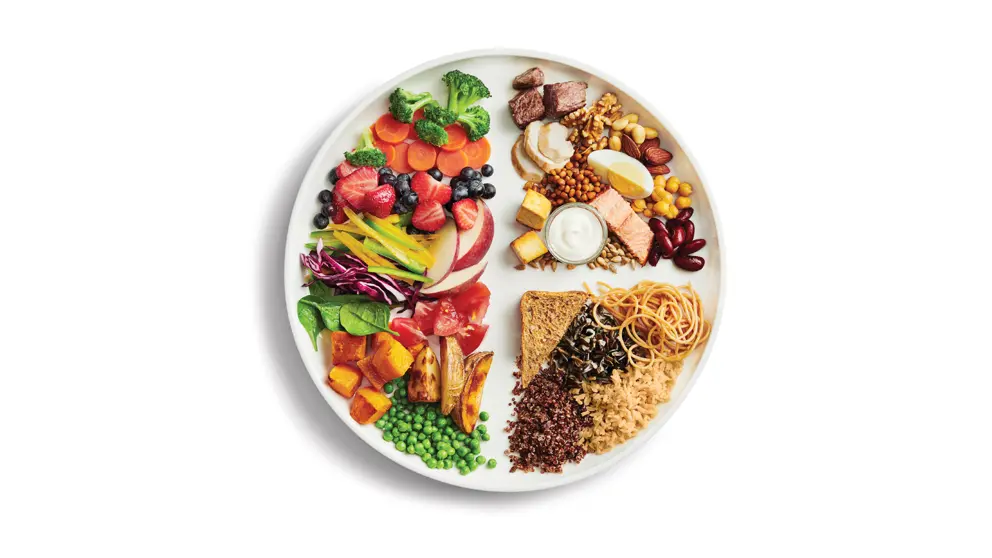The new and improved Canada’s Food Guide is out, and Canadians are applauding its updated look and straightforward messages.
The food guide is no longer just one document. Rather, it’s a suite of online resources at Canada.ca/foodguide, including advice, videos and several recipes from Heart & Stroke. The photo above is the Food Guide Snapshot, in which the old “rainbow” model has been replaced by a simpler plate model, with the following advice:
- Have plenty of vegetables and fruits (half plate)
- Eat protein foods (quarter plate)
- Choose whole grain foods (quarter plate)
- Make water your drink of choice
Here’s how this new guide will help you make better food choices, especially if you are at risk from or are living with heart disease or stroke.
- Focus on the plate: The plate depicts a heart-healthy diet, modelled after well-researched eating plans such as the Mediterranean Diet and the DASH Diet. It’s loaded with vegetables, fruit, whole grains and lean protein, which have been shown to have a protective effect in reducing the risk of cardiovascular disease, including risk factors such as high blood pressure and elevated blood cholesterol.
- Eat more plant-based foods: That means choosing beans, lentils, soy or nuts more often. The goal is to improve heart health by reducing saturated fat, which mostly comes from animal-based foods such as beef, chicken and dairy products. The guide does not exclude animal foods, but encourages us to try more plant-based foods (which Canadians currently don’t eat enough of).
- Keep milk in its place: The old food group “milk and alternatives” has been rolled into the new “protein” segment of the plate, and the recommendations are to choose low-fat milk, cheese and yogurt. Again, this is an effort to slash saturated fat. But dairy foods are still important; they provide nutrients such as calcium, vitamins A, D, B12 and riboflavin. Plus studies on the DASH diet show that low-fat milk and yogurt provide minerals that help reduce blood pressure.
- Think outside the box: The guide has a stronger focus on choosing more whole foods and fewer ultra-processed foods. Many studies support the heart health benefits of eating vegetables, fruit, whole grains and protein, while reducing your intake of ultra-processed foods loaded with sodium, sugar and saturated fat. (The guide calls them “foods that undermine healthy eating.”) As people in Canada have consumed more ultra-processed foods in recent years, we’ve seen rising rates of obesity, cardiovascular diseases, high blood pressure and type 2 diabetes.
- Drink smart: The guide recommends water as the beverage of choice, in an effort to reduce intake of sugary drinks such as pop, juice and sports drinks. Sugary drinks are the main source of total sugars in the Canadian diet, and excess sugar is linked to obesity and heart disease.
- Eat mindfully: The guide reminds you to cook more often, eat meals with others, be mindful of eating habits, and enjoy your food. And it provides the smart advice to be aware of food marketing, which can often be misleading.
The guide was truly written with health in mind. Health Canada’s team looked over more than 100 systematic reviews on food topics, including many documents specifically on cardiovascular disease, stroke, hypertension and cholesterol. Reports commissioned by the food and beverage industry were excluded to reduce any conflict of interest.
Heart & Stroke donors helped make this new direction a reality by supporting advocacy for a robust food guide free of commercial influence, with an emphasis on whole foods, cooking from scratch and limiting consumption of ultra-processed foods and sugary drinks.
- Learn more about healthy eating.
- Browse our heart-healthy recipes.
